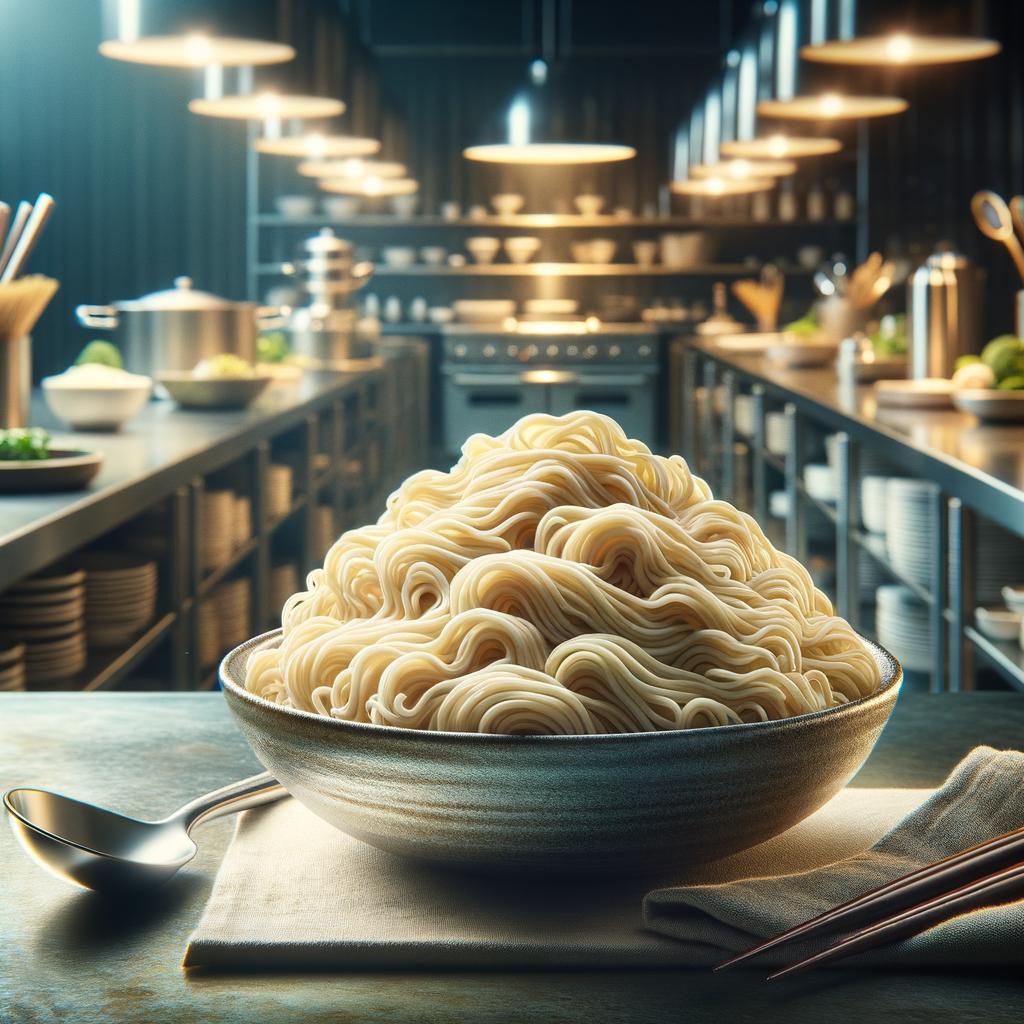Fresh Ramen Noodles

Description
Fresh ramen noodles, a staple in Japanese cuisine, are an embodiment of simplicity and culinary craftsmanship. These elongated, golden strands have a distinct, chewy texture that sets them apart from their counterparts. They are made from wheat flour, water, and kansui - a type of alkaline mineral water which gives the noodles their characteristic springiness and yellow hue. The flavor profile of fresh ramen noodles is subtly earthy, providing a perfect base to absorb and complement the flavors of broths and sauces. What sets these noodles apart is their versatility, with the ability to adapt to a plethora of dishes and preparations.
Primary Uses
Fresh ramen noodles are the star ingredient in the classic Japanese dish, Ramen, where they are served in a savory broth, often adorned with slices of meat, boiled eggs, and vegetables. These noodles also find their way into stir-fry dishes, salads, and even fusion recipes like ramen burgers. Outside of culinary uses, ramen noodles hold a cultural significance in Japan, representing comfort food that is deeply rooted in their tradition and everyday life.
History
The origins of ramen noodles are as tangled as the noodles themselves. While they are a staple in Japan, it's believed that they were actually introduced from China in the late 19th century. Over time, Japan embraced and adapted these noodles, creating regional variations that range from the miso-based ramen of Hokkaido to the soy-based version in Tokyo. During the post-war era, instant ramen was invented, providing an affordable, quick meal for the masses and catapulting ramen to global popularity. Folklore says that the first ramen shop in Tokyo had a secret recipe for their broth that was passed down through generations, adding a touch of intrigue to this humble ingredient.
Nutritional Information
Fresh ramen noodles are a source of energy, primarily in the form of carbohydrates. They also contain small amounts of protein and dietary fiber, while being low in fat. The use of kansui in the noodles adds minerals such as potassium and sodium. While these noodles are not typically hailed as a 'health food', they do offer satiety and quick energy, making them a staple in many diets. Compared to other types of noodles like soba or udon, ramen noodles have a distinct chewy texture due to the higher gluten content. As with any food, they are best enjoyed as part of a balanced diet, where their capacity to carry flavors can be used to incorporate a variety of other nutritious ingredients.

